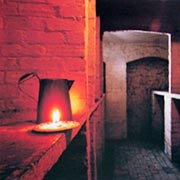47 Brunswick Square
Number 47 is one of the smaller houses on the Square. It was originally number 45 but became number 47 when the Square was renumbered in 1834. The small size led to speculation that it had not formed part of the original design and was a later infill. However, it is clear from numerous legal documents describing property transactions during the late 1820s that number 47 was indeed part of the original design.
Those transactions are complicated to follow but show the ownership and leasehold of the house changing hands many times in fairly quick succession. To our modern minds, this looks like property speculation and that might indeed have been the case. The documents are also useful because they are contemporaneous, primary sources and help us to establish some parts of the building process. We can see, for example, that in April 1827 a lease agreement stipulated that Thomas Cooper and Charles Lynn (who were builders) had to finish the property (including the coach house and stabling behind the house) by 24 June 1828. Furthermore, some of the property transactions involve a certain William Furner, to whom we will return later.
The house is mentioned in the will of Charles Lynn, who died in 1828. The next owner was Martha Becher, a widow who died in 1833 leaving the house to her daughter, Dame Amelia Maria Ann Darell. Dame Amelia never lived in the house, although we do know it was occupied by William Boxall during the early 1840s.
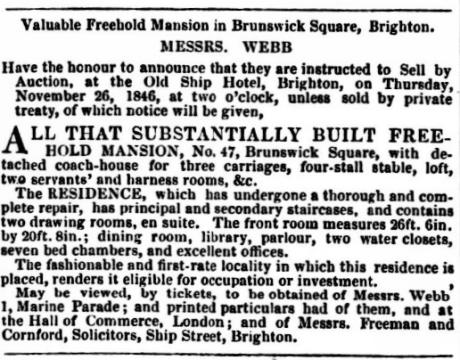
Auction notice from the Brighton Gazette of Thursday 12 November 1846
The house was auctioned in 1846 and the auction notice gives us a detailed description of the house for the first time. There are two drawing rooms, a dining room, library, parlour, two water closets, seven bed chambers and “excellent offices”. There is also the coach-house and stabling. In a striking parallel with today, the particulars go on to say that “the fashionable and first-rate locality in which this residence is placed, renders it eligible for occupation or investment”. The new owners were Benjamin Smith and William Penfold. Smith occupied the house briefly, in 1848, and the next occupant was Woodbine Parish.
By the time of the 1851 census, the house is occupied by James Nelson Palmer, age 47, rector of Breamore and his 42 year old wife. An elderly aunt of James is visiting and they have five servants. Sadly, Palmer provided no forenames for any of the other occupants and so they remain largely unknown. The Palmers did not stay for long and in 1859 it was occupied by a Mrs Mayers. Unlike some of the houses in the Square (such as number 39), no-one seems to have lived in number 47 for more than a few years.
The 1861 census shows the head of household as Thomas Ellames Withington, a 29 year old magistrate born at Culcheth Hall, Lancashire.
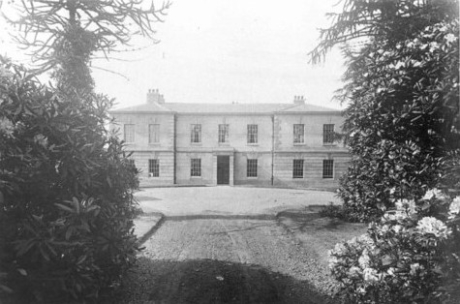
Culcheth Hall
Thomas is accompanied by his wife Cecilia Jane (age 30) and their 2 young sons (Thomas Ellames, age 3, and one year-old Edward Theodore). They have nine servants! One of the servants, Mary George, is a lady’s maid and has known Cecilia since the latter was a child. Mary is ten years older than Cecilia and was a servant at the latter’s family home. When Cecilia married Thomas and left home, Mary went with her. There was obviously a strong connection between them because Mary remained Cecilia’s maid until Cecilia died in 1875. But that was not the end of the story. Thomas remarried and Mary remained as a domestic servant in the Withington household until she was at least 60 years old.
In 1863, Benjamin Smith died and the new owner of the house was Frederick Besley. He lived in the property himself and was obviously involved in local matters as he was appointed one of the Brunswick Commissioners in 1866. Sadly, he took his own life in December 1867 and the house was auctioned again in April 1868.
Even allowing for the auctioneer’s puffery, the house is obviously still viewed as a very desirable residence. It is again advertised as being suitable for investment or residence. It is on the West side of the Square, described as “a preferable part of that fashionable watering place”. The house “was thoroughly and expensively decorated” the previous summer. There is some fine detail, including that on the first floor “the ceilings have enriched cornices, picked out with gold” and “the walls are papered with French white and gold paper”. The ground floor dining room is “papered with green and gold”. In addition, “the occupier will have right of entrance into the ornamental garden in the centre of the square”.
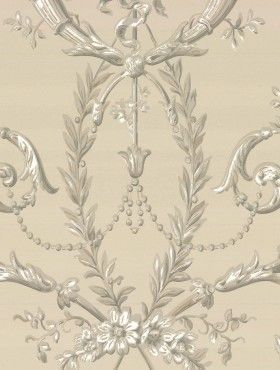
Example of French wallpaper
The house was sold for £3,980, broadly equivalent to £250,000 today. (As an aside, this illustrates just how high modern property prices are. Online websites in April 2022 show that the average price for a flat in Brunswick Square is more than £460,000. There are probably 4 or 5 flats per house.)
Over the following three years there are more property transactions and little evidence of who any occupiers were. In the 1871 census there are only two very young boys listed; Hugh Arthur (age 4) and George Alfred (age 3) Travers who are the sons of the head of household. In 1874 the house was available to let, unfurnished and with immediate possession. Again, the house is described as being on the “preferable” side of the Square.
Over the next several years there are more short-term residents. The most notable of these are Admiral Sir Sidney Dacres in 1884 and Lady Dacres, from 1885 to 1887.
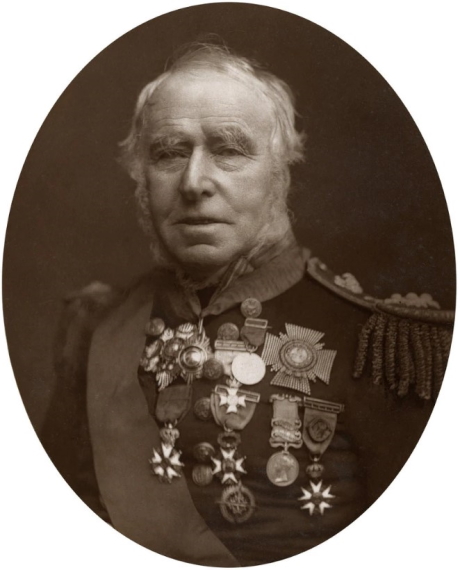
Admiral Dacres
According to his Wikipedia page, Admiral Sir Sydney Colpoys Dacres GCB was an officer of the Royal Navy who saw service during the Greek War of Independence, when he was involved in an attack on the Turkish forces at Morea, and later during the Crimean War. Born into a substantial naval dynasty during the Napoleonic Wars, he eventually rose to the rank of Admiral and became First Naval Lord.
The 1891 census brings us back to Edmund Joseph Furner, age 85, a surgeon born in Brighton. We know from a document signed in 1878 that the house had been conveyed to him. He is finally living there. Also resident is his wife Arabella, age 76 and daughter May O’Brien Furner, age 45.He was obviously one of “the great and the good”. For example, he had attended the grand ball at the inauguration of the Royal Pavilion in 1851, when it had been “restored to its former splendour”.
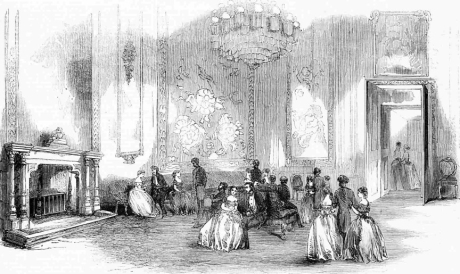
A ball at the Royal Pavilion
He might also have been a local celebrity, as he regularly endorsed the beneficial effects of dandelion juice in the local newspapers. Arabella also played her part and was a patroness of a fundraising bazaar held at The Dome in 1877 for the benefit of the Sussex County Hospital. When Furner died in 1899 he was the Sussex County Surgeon and left estate valued at £46,771 (over £3.6 million today). His son Willoughby, also a surgeon, lived at number 13 Brunswick Square at the time of his father’s death.
The house then passed to Furner’s daughter May. At that time, it was valued at £2,500. Therefore, in the thirty years from 1868 to 1899, the value has gone down considerably (by almost 30% in fact). Perhaps the glory days of the Square were now over. Or perhaps the property had been valued in such a way as to reduce the amount of estate duty due? That might be an unfair assertion, but we do know that ownership passed to Thomas Broderick later in 1899 for £3,000. This is still almost 25% less than the value in 1868 but is considerably more than £2,500.
Broderick was another owner-occupier. In the 1901 census he is the head of household. He is a 75 year old retired solicitor born in Holborn, London and lives with his 72 year old wife Mary and their clergyman son Reginald, age 31. They have a modest four servants. Broderick dies in 1909, leaving nearly £38,000 (equivalent to almost £3m today).
That brings us to the 1911 census and another colourful inhabitant of the house, namely John Whittome, a 74 year old retired farmer. He lives there with his 53 year old wife Mary and only two servants. This was the first census where individuals completed them in person, and in the column at the far side of the form (where infirmities are supposed to be entered) he has written “short of money caused by the excessive taxes of the present government”. This has then been crossed out in red ink, doubtless by a representative of that very government. John Whittome died in the house in January 1923 and his body was taken to his home town of March, near Peterborough.
Whittome’s death marked the end of an era for the house. The next owner, Mrs Percival Jones, had the house converted into flats.
Research by Teresa Preece, 2022
Return to Brunswick Square page.


